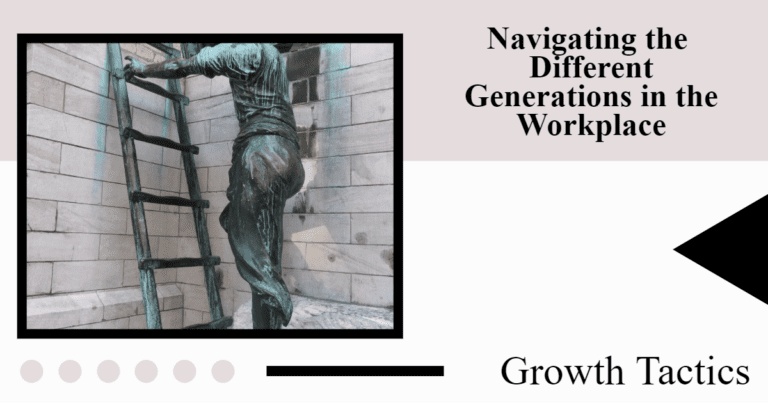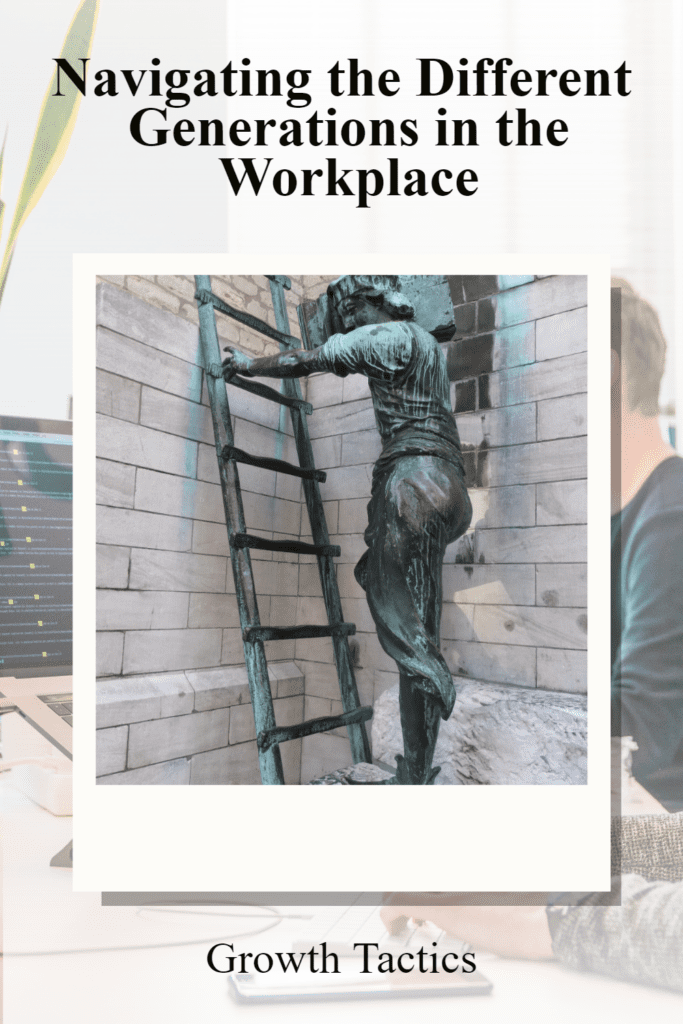Are you curious about the dynamics of the modern workplace and how different generations come together to create a vibrant and productive environment? Well, you’ve come to the right place! In this article, we’ll explore the phenomenon of generational differences in the workplace and discuss how to bridge the gaps between the five unique generations that make up today’s workforce. So, buckle up and get ready to dive into the fascinating world of workplace dynamics!
Jump To Section
Understanding the Generational Landscape
What makes each generation unique?
Let’s start by examining the characteristics that define each generation. From Baby Boomers to Gen Z, each cohort brings its own set of values, experiences, and communication styles to the table. By understanding these differences, we can foster a more inclusive and collaborative work environment.
So, let’s dive in and explore the characteristics that define each of the five generations:
The Silent Generation (Born 1925-1945):
This generation grew up during the Great Depression and World War II. They value hard work, discipline, and loyalty. The Silent Generation often exhibits a strong work ethic and prefers traditional forms of communication. They bring a wealth of experience and wisdom to the workplace.
Baby Boomers (Born 1946-1964):
The Baby Boomers witnessed significant social and cultural changes, such as the civil rights movement and the sexual revolution. They tend to be optimistic, goal-oriented, and loyal to their organizations. Baby Boomers value professionalism and may prioritize face-to-face communication.
Generation X (Born 1965-1980):
Gen Xers are the “middle child” generation sandwiched between the Baby Boomers and Millennials. They experienced the rise of technology and globalization. Gen Xers are known for their independence, adaptability, and entrepreneurial spirit. They value work-life balance and seek autonomy in their careers.
Millennials (Born 1981-1996):
Millennials, also known as Gen Y, are often described as the “digital natives” due to their exposure to technology from a young age. This generation witnessed rapid advancements in technology, including the rise of social media. Millennials value creativity, diversity, and inclusion. They seek a sense of purpose in their work and desire a flexible and collaborative work environment.
Generation Z (Born 1997-2012):
Gen Z, the youngest generation in the workforce, grew up in a highly digital and interconnected world. They are true digital natives, with smartphones and social media playing a significant role in their lives. Gen Z is known for their entrepreneurial mindset, innovative thinking, and desire for work-life balance. They value authenticity, social responsibility, and meaningful work.
How do generational differences impact the workplace?
The clash of different generations in the workplace can sometimes lead to misunderstandings and conflicts. For example, younger generations may be more technologically savvy and value work-life balance, while older generations may prioritize loyalty and job security. Recognizing and appreciating these differences is crucial for creating a harmonious and productive workplace.
Exploring Generational Dynamics in the Workplace

Gen Xers vs. Millennials: Bridging the Gap
Gen Xers and millennials often find themselves working side by side, each with their own unique perspectives and approaches. By fostering open and honest conversations, organizations can create a supportive environment where both generations can learn from each other. Additionally, implementing flexible work arrangements can cater to the preferences of both generations, leading to higher job satisfaction and overall productivity.
Embracing Gen Z in the Modern Workplace
As the newest entrants into the workforce, Gen Z employees bring fresh ideas, technological prowess, and a desire for meaningful work. To attract and retain Gen Z talent, organizations must adapt to their preferences, such as offering remote work options and creating a sense of purpose through social responsibility initiatives. By doing so, organizations can tap into the potential of this dynamic generation.
The Silent Generation and Baby Boomers: A Wealth of Experience
While the Silent Generation and Baby Boomers may be approaching retirement, their experience and expertise are invaluable assets. Creating opportunities for knowledge transfer through mentorship programs can ensure that their wisdom is passed on to younger generations. Additionally, organizations should provide a work environment that values the contributions of older generations, fostering a sense of belonging and engagement.
How can organizations bridge the generational divides?
To bridge the generational divides, organizations must implement strategies that promote understanding and collaboration across different generations. This can involve mentorship programs, intergenerational projects, and creating a work environment that values diversity and inclusion. By leveraging the strengths of each generation, organizations can unlock the full potential of their workforce.
Mentorship Programs
One of the most effective ways to bridge the generational divides is through mentorship programs. These programs pair experienced employees from older generations with younger employees and vice versa. By creating these mentor-mentee relationships, organizations can facilitate knowledge transfer while also fostering meaningful connections and promoting a culture of learning.
Intergenerational Projects
Another way to bridge the generational divides is to create intergenerational projects. These projects bring employees from different generations together to work on a common goal. By collaborating on a project, employees can learn from each other, share their unique perspectives, and develop a deeper understanding of each other’s work styles and values. Intergenerational projects can also promote teamwork and lead to innovative solutions.
Valuing Diversity and Inclusion
Creating a work environment that values diversity and inclusion is crucial for bridging generational divides. This can involve creating a culture of mutual respect, practicing active listening, and avoiding generational stereotypes. Organizations can also foster a culture of inclusion by offering flexible work arrangements that cater to the preferences of different generations. By creating a welcoming and supportive environment, organizations can attract and retain top talent from all generations.
Reverse Mentoring
Reverse mentoring is a relatively new concept that involves younger employees mentoring older employees on topics related to technology and social media. This can be an effective way to bridge the generational gap and promote knowledge-sharing. By turning the traditional mentorship model on its head, organizations can empower younger employees to take on leadership roles, develop their interpersonal skills, and gain valuable insights from more experienced colleagues.
Generational Training and Workshops
Providing generational training and workshops can help employees better understand the values, attitudes, and communication styles of their colleagues from different generations. These training sessions can cover topics such as effective communication, conflict resolution, and building trust. By promoting open and honest communication about generational differences, organizations can create a more tolerant and collaborative work environment.
Diversity and Inclusion Initiatives
In addition to valuing diversity and fostering inclusion, organizations can introduce specific initiatives that promote intergenerational collaboration. For example, hosting social events or team-building activities that include employees from different generations can provide opportunities for employees to build relationships and learn from each other. Creating affinity groups or employee resource groups specifically for different generations can also allow employees to connect with like-minded colleagues and build community.
By leveraging these strategies, organizations can bridge the generational divides and unlock the full potential of their workforce. By embracing the diverse perspectives of each generation, we can create a workplace culture that celebrates differences and fosters collaboration. So, let’s work together to build a better future where generational differences are celebrated and harnessed for greater success!

Tips for Supervising Each Generation
As a supervisor, your job is to lead and guide your team to success, regardless of their generation. However, managing and supervising each generation can be a unique challenge. In this section, we’ll explore some simple yet effective strategies to lead each generation effectively and make your team thrive.
How to Supervise Baby Boomers
Baby Boomers are known for their strong work ethic and respect for authority. To supervise them effectively, establish clear expectations, and set achievable goals. Boomers prefer traditional communication methods like face-to-face meetings, so make yourself available for one-on-one conversations. Recognize their experience and tenure, and provide public recognition of their successes.
How to Supervise Generation X
Gen Xers value work-life balance and prefer to work independently. To supervise them, focus on clear performance objectives, and provide them with the flexibility to manage their own schedules. They also appreciate direct communication and feedback, so make sure to give them regular check-ins and constructive critiques.
How to Supervise Millennials
Millennials are tech-savvy, highly collaborative, and value a sense of purpose at work. To supervise them, provide opportunities for professional development, and involve them in projects that align with their personal interests. Regular check-ins and frequent feedback are essential as they appreciate constructive criticism and desire to work in a supportive team environment.
How to Supervise Gen Z
Gen Zers are passionate about social causes and care about ethical and sustainable practices. To supervise them, prioritize feedback, and provide them with opportunities for community service or activism within the workplace. They also value visual and interactive communication methods, so consider using multimedia platforms to keep them engaged and informed.
Key Takeaways
To recap, bridging the generational divides in the workplace is essential for creating a harmonious and productive work environment. Here are the key points to remember:
- Recognize and appreciate the unique characteristics and values of each generation.
- Implement strategies that promote understanding and collaboration across different generations.
- Foster open and honest conversations to bridge the gap between Gen Xers and millennials.
- Embrace the technological prowess and desire for meaningful work of Gen Z employees.
- Tap into the experience and expertise of the Silent Generation and Baby Boomers through mentorship programs.
- Create a work environment that values diversity, inclusion, and work-life balance.
By embracing the diversity of generations in the workplace and bridging the divides, organizations can create a thriving and inclusive culture that brings out the best in everyone. So, let’s work together to build a better future where generational differences are celebrated and harnessed for greater success!


